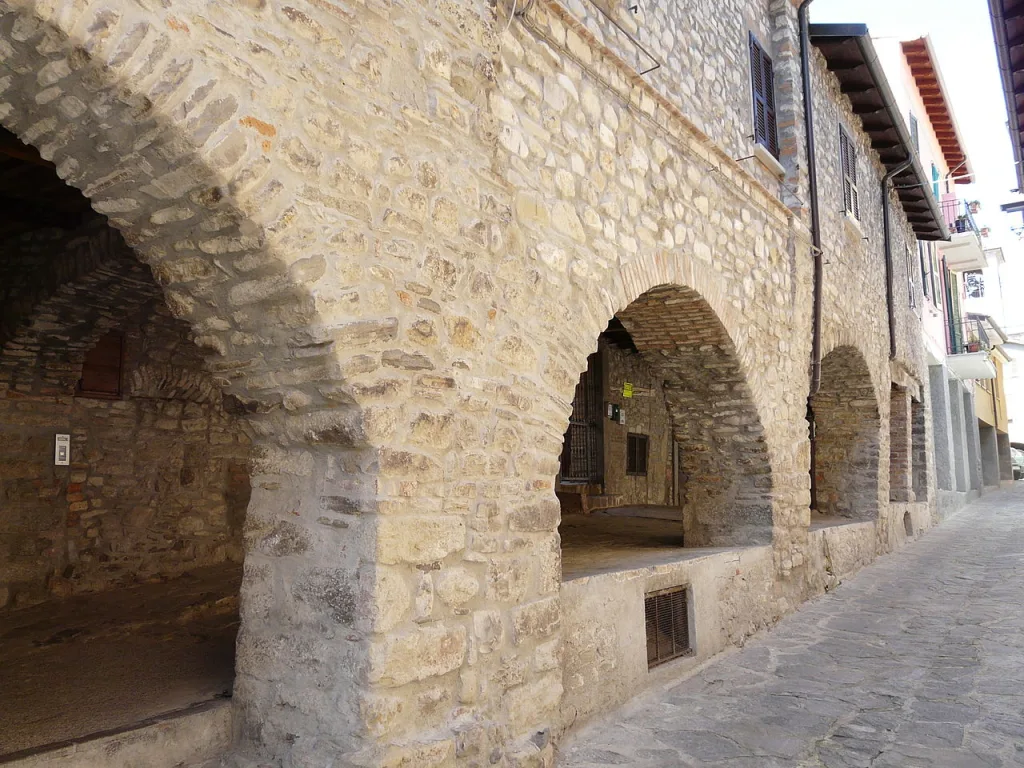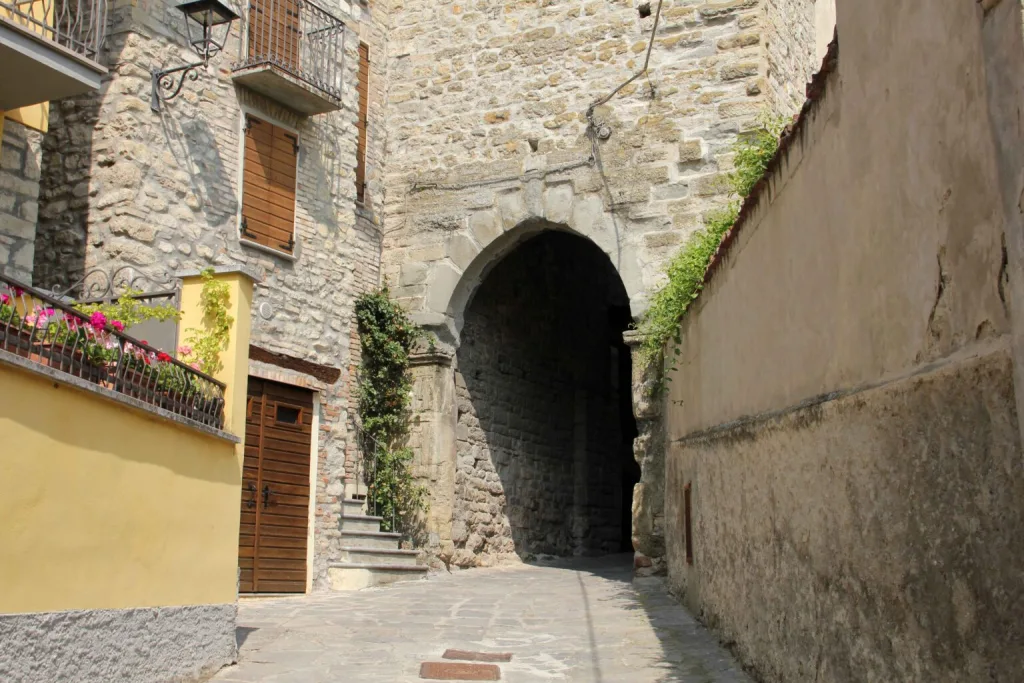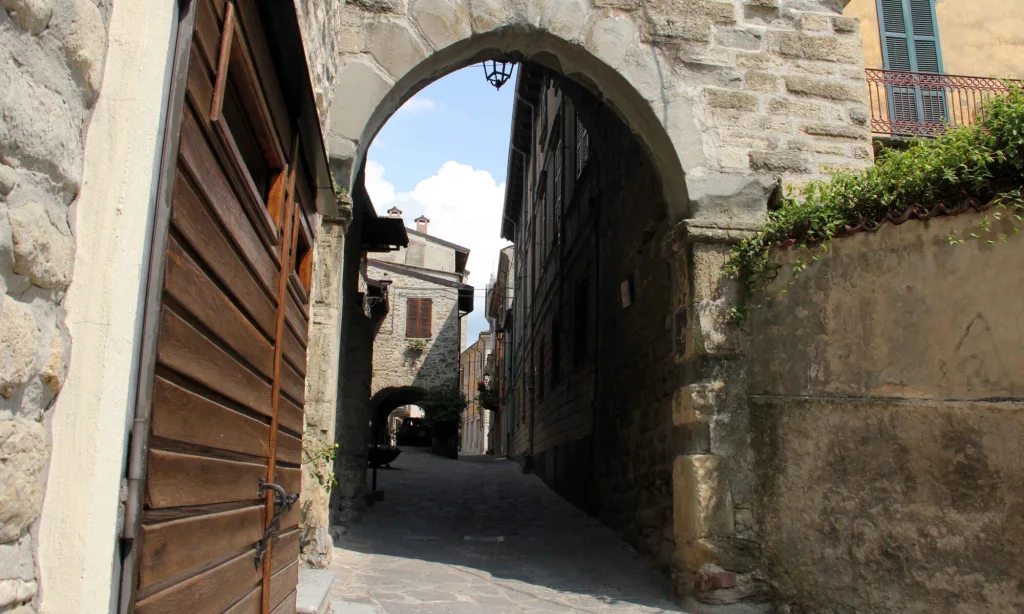A walk through the ancient alleyways of Varzi is one of the wonders that the Oltrepò Pavese offers tourists. A not-to-be-missed experience, among cobbled streets, stone houses and small shops, among ancient quarters where only the sound of our footsteps and the chatter of those we meet on the street resonate
A medieval village that speaks of its past
The peculiar medieval architecture, characterised by rows of overlapping porticoes, gives the village an evocative and fascinating atmosphere. Every corner of Varzi tells a thousand year old story, where tradition and craftsmanship are in perfect balance.
One of the peculiarities of Varzi is the presence of the ancient cellars where the salami is matured, historic caskets of a precious production and a DOC, that of Salame di Varzi, the pride of the local community. The cellars are not only a place of production and conservation of culinary excellence, but also a historical and cultural heritage of inestimable value.
The suggestive majolica alley
The history of Varzi is not only linked to the famous production of salami. It was also an important economic centre, thanks to the presence of the ovens that marked the local history in the second half of the 19th century. A reminder of this is the Vicolo della Maiolica (Maiolica alley), located at the foot of the town's defensive walls and characterised by an original construction that protrudes from the wall itself, with loopholes that were used to aim weapons.
Alley behind the walls
Vicolo Dietro le Mura (Behind the Walls) has the shape of a tunnel that crosses the majestic medieval walls. It is an evocative passageway overlooked by houses that have their main entrance from Via Porta Nova, creating a perfect combination of ancient architecture and the enchanted atmosphere of the city.
The most striking feature is the structure of the walls, which are irregular and fascinating. A reminder of the past, the walls bear witness to a time when defence was fundamental to the security of the town. The wooden doors, with their ancient jambs and visible traces of time, tell the story of the men and women who have passed through these gates over the centuries. The large windows of the portico, which overlook the alleyways, are true works of medieval art, with their peculiar dimensions and shapes. Walking under the portico and looking at the buildings above, you can feel the presence of time that has settled on these ancient walls.

The Via di Dentro district
Via di Dentro is of particular importance. Originally it was the natural entrance to the town for those coming from the plain and the exit for those heading for the mountains. It is a road that runs in a straight line between Porta Sottana and Porta Soprana. Along this straight line you can admire numerous historical and architectural testimonies. Between the Oratory of the Whites and the Oratory of the Reds you can see an urban extension that was originally the main square of the village. This was the central meeting place for the people of Varzi, where edicts were read, judgements and sentences were pronounced and public contracts were announced. It was a place of great social and administrative importance for the community of Varzi, where there was an atmosphere of activity and decisions that affected the lives of all the inhabitants. The importance of the district was also reflected in the houses located there. Many notaries with their offices, judges and civil servants usually resided in this street, making it the administrative and judicial centre of the town. And not only that. The street was also animated by workshops, shops and inns, which made the district even more lively.

Among the alleys not to be missed is Via del Mercato, characterised by a double row of 14th-century arcades.










